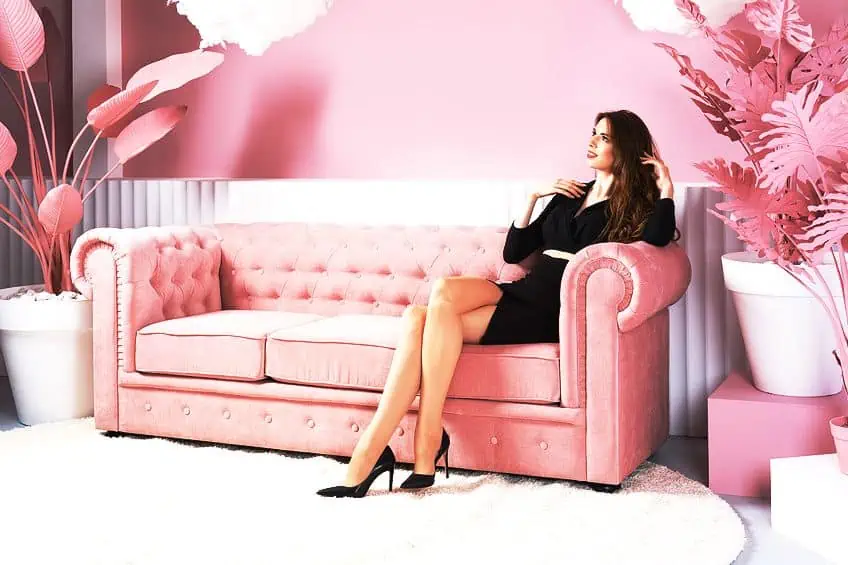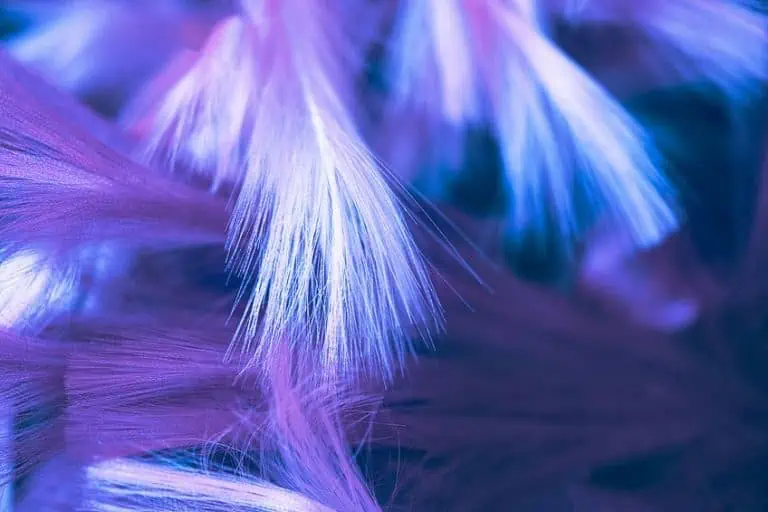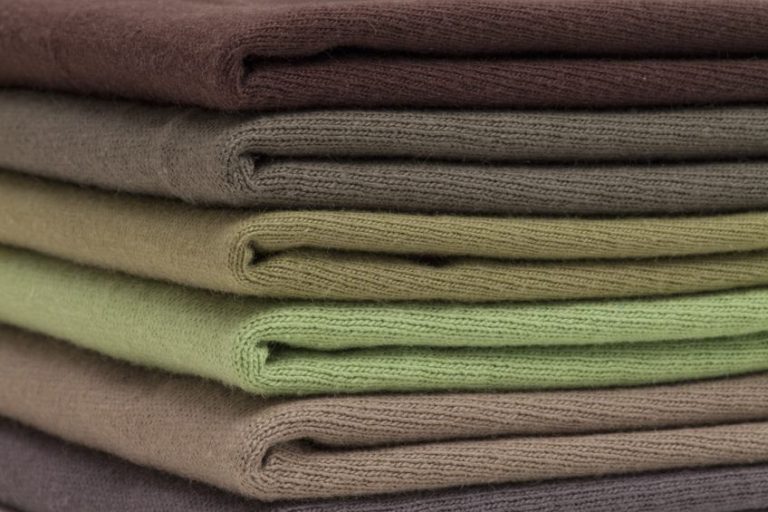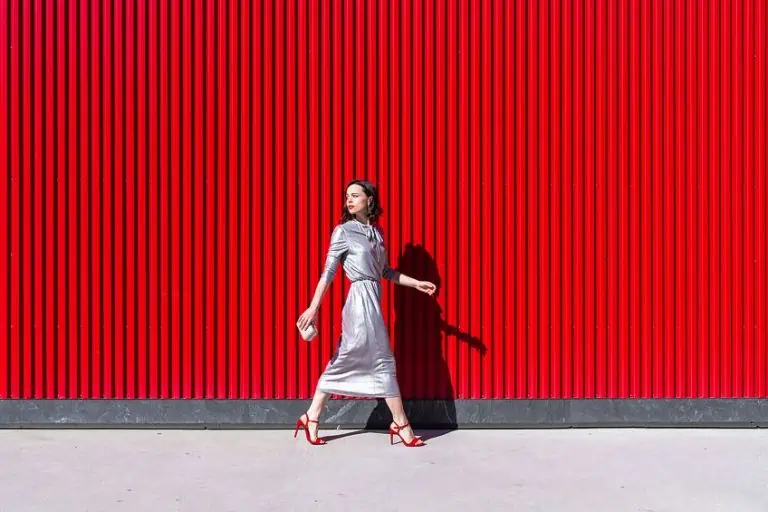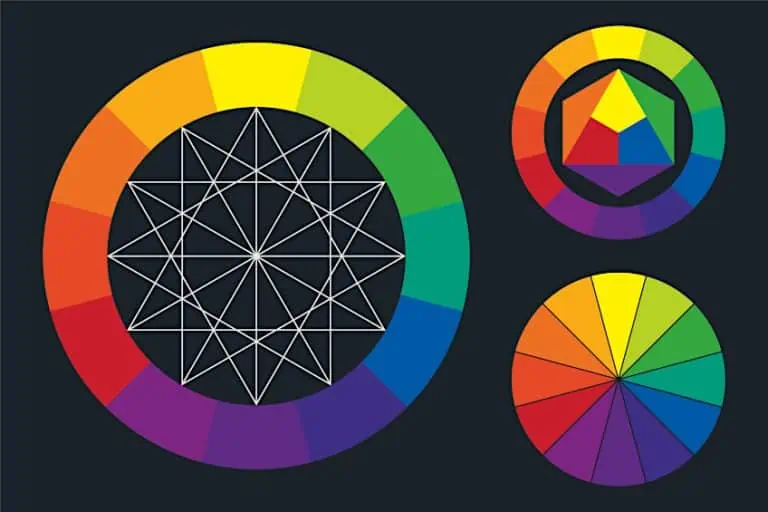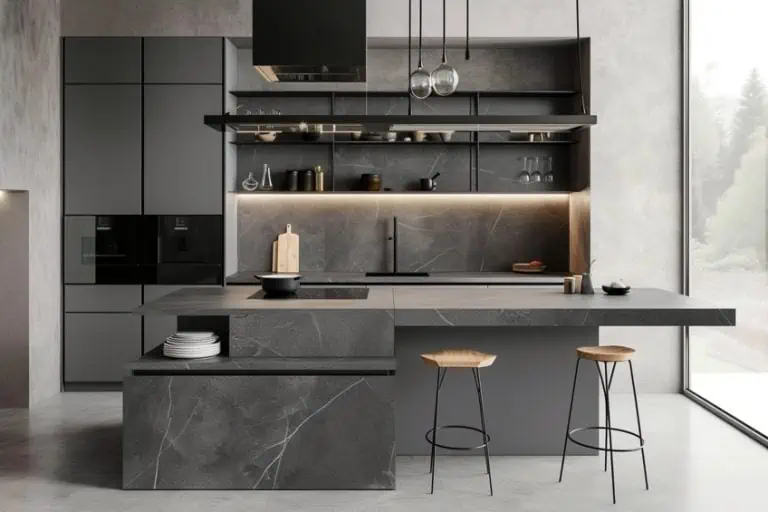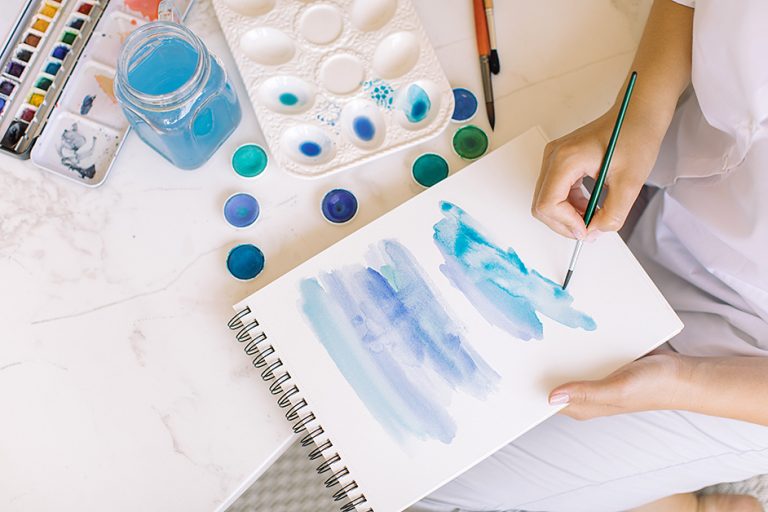Fuchsia Color – Learn About the Hues of the Fuchsia Color
This post may contain affiliate links. We may earn a small commission from purchases made through them, at no additional cost to you.
Embark on a chromatic journey where the whimsical fuchsia color reigns supreme, casting an irresistible spell of intrigue and fascination. The eternal question lingers: is fuchsia pink or purple? This enigmatic hue gracefully dances between the realms of both, defying definition and captivating the eye with its magnetic allure. Explore the vast palette of shades of fuchsia, from delicate blushes infused with hints of violet, to intense purples adorned with a vivacious touch of magenta. Unlocking the mystery of the fuchsia color meaning unveils a world where boundaries dissolve, allowing this vibrant hue to shine with its own unique brilliance. And if you dare to delve further, discover the secrets of what colors make fuchsia and how to make fuchsia paint for yourself, and embrace the enchanting journey into a realm where imagination knows no bounds!
Table of Contents
What Color Is Fuchsia?
In the realm of colors, there resides a captivating enigma that dances on the precipice of wonder – fuchsia. It is a hue that defies simple classification, leaving us pondering, is fuchsia pink or purple? Its elusive nature emerges from the delicate interplay between these two worlds, crafting a mesmerizing symphony of hues that tantalize the eye and ignite the imagination. Step into the kaleidoscope of shades of fuchsia, where a multitude of colors converge in harmonious chaos. From soft blushes infused with whispers of violet to vivacious purples kissed by the ardor of magenta, each shade boasts its own distinct personality, weaving together a tapestry of visual delight.
What color is fuchsia then? It is the embodiment of bold elegance, an audacious fusion of vibrant energy and subtle sophistication. It is the tantalizing meeting point where passing and grace entwine, creating an enchanting hue that refuses to be confined by traditional boundaries.
Fuchsia beckons you to embrace its transcendence, to explore a world where conventional labels are rendered meaningless. It invites you to release preconceived notions and surrender to its vibrant allure. In the realm of fuchsia, you are free to wander, to dream, and to revel in the magical tapestry of color that unfolds before your eyes.

| Fuchsia Color | Fuchsia Hex Code | RGB | Fuchsia Color Code CMYK (%) | Shades of Fuchsia |
| Fuchsia | #d9027d | 217, 2, 125 | 0, 99, 42, 15 | |
| Punch | #f25278 | 242, 82, 120 | 0, 66, 50, 5 | |
| Magenta | #ff00ff | 255, 0, 255 | 0, 100, 0, 0 | |
| Watermelon | #fe7f9c | 254, 127, 156 | 0, 50, 39, 0 | |
| Hot Pink | #ff1694 | 255, 22, 148 | 0, 91, 42, 0 | |
| Lemonade | #fcbacb | 252, 186, 203 | 0, 26, 19, 1 | |
| Blush | #fec5e5 | 254, 197, 229 | 0, 22, 10, 0 | |
| Strawberry | #fc4c4e | 252, 76, 78 | 0, 70, 69, 1 | |
| Rouge | #f26b8a | 242, 107, 138 | 0, 56, 43, 5 | |
| Hollywood Cerise | #f400a1 | 244, 0, 161 | 0, 100, 34, 4 | |
| Neon Fuchsia | #fe4164 | 254, 65, 100 | 0, 74, 61, 0 |
Fuchsia Throughout Art History
By delving into the rich tapestry of fuchsia throughout the history of art, you will no doubt find that this audacious color has left a significant mark on the canvases of great artists. This has led fuchsia to transcend time and captivate the imaginations of artists and audiences alike across centuries past, and most certainly centuries to come.
Impression, Sunrise (1872) by Claude Monet
| Artist | Claude Monet (1840 – 1926) |
| Date Completed | 1872 |
| Medium | Oil on canvas |
| Dimensions (cm) | 48 x 63 |
| Current Location | Musée Marmottan Monet, Paris, France |
In the late 19th century, the Impressionist movement emerged, embracing the boldness of fuchsia as a means to capture the fleeting essence of light and atmosphere. Artists like Claude Monet embraced this enchanting color in his renowned masterpiece “Impression, Sunrise.” The bold strokes of fuchsia in the sky reflect not only the rising sun but also the revolutionary spirit of the movement itself.
 Impression, Sunrise (1872) by Claude Monet; Claude Monet, Public domain, via Wikimedia Commons
Impression, Sunrise (1872) by Claude Monet; Claude Monet, Public domain, via Wikimedia Commons
The Persistence of Memory (1931) by Salvador Dalí
| Artist | Salvador Dalí (1904 – 1989) |
| Date Completed | 1931 |
| Medium | Oil on canvas |
| Dimensions (cm) | 24x 33 |
| Current Location | The Museum of Modern Art, New York, United States |
Moving forward into the early 20th century, the iconic surrealist painter Salvador Dalí mesmerized viewers with his dreamlike landscapes. In his masterpiece The Persistence of Memory, the fuchsia-toned clock melting over a barren landscape evokes a sense of time’s fluidity, blurring the boundaries between reality and the subconscious. The vibrant intensity of fuchsia continued to inspire artists of the abstract expressionist movement. The works of Mark Rothko, such as No. 13 (White, Red on Yellow), envelop the viewer with luminous blocks of color.
In these abstract compositions, the inclusion of fuchsia invokes a deep emotional response, transporting the viewer to a realm where words fall short.
Venturing further into contemporary art, Yayoi Kusama, the visionary of polka dots, drew upon the power of fuchsia in her iconic Infinity Mirror Rooms. In these immersive installations, the vivid fuchsia hues reverberate infinitely, enveloping the viewer in a hypnotic and infinite expanse. Fuchsia throughout art history has served as a vehicle for emotion, expression, and pushing the boundaries of perception.
It has ignited the imaginations of countless artists, transcending mere pigments on a palette to become a language of its own, speaking to the depths of the human experience. As we contemplate the fuchsia strokes across these iconic works, we are reminded of the boundless power of art to evoke emotion, challenge conventions, and transport us to realms where reality and imagination intertwine.
Fuchsia stands as a testament to the enduring allure of color, its capacity to stir the soul, and its ability to transcend time, leaving an indelible mark on the canvas of art history.
What Colors Go Well With Fuchsia?
Like a conductor orchestrating a symphony, fuchsia invites an ensemble of complementary companions to dance alongside its audacious brilliance. From the soft embrace of serene greens to the tantalizing allure of golden yellows, the palette of colors that intertwine with fuchsia is as vast as it is captivating. Explore the captivating combinations that lend their magic to fuchsia and unlock a world where bold contrasts and harmonious unions ignite a visual feast that leaves an indelible impression. Together, let us unravel the secrets of color synergy and discover the breathtaking kaleidoscope of possibilities that await when fuchsia finds its artistic companions.
Fuchsia vs. Magenta
Let us begin our journey by delving into the realm of analogous colors, where shades reside side by side on the color wheel. Here, fuchsia finds a kindred spirit in the regal hue of magenta. Like a duo of royalty, these two colors intertwine effortlessly, creating a symphony of purple-infused beauty. Picture a summer garden, where fuchsia flowers dance alongside magenta blossoms, their vibrant tones harmonizing to create a mesmerizing display of depth and intensity.
The presence of magenta accentuates fuchsia’s audacity, elevating its vibrancy to new heights.

| Color Name | Color Hex Codes | RGB | CMYK Color Code (%) | Shades of Color |
| Fuchsia | #d9027d | 217, 2, 125 | 0, 99, 42, 15 | |
| Magenta | #ff00ff | 255, 0, 255 | 0, 100, 0, 0 |
Fuchsia vs. Reds and Oranges
Venturing further into the realm of analogous colors, we encounter the warm embrace of passionate reds and fiery oranges. These vibrant companions ignite fuchsia’s brilliance, infusing it with a fiery energy that commands attention. Imagine a tropical sunset, where fuchsia streaks across the horizon, blending seamlessly with the warm hues of scarlet and tangerine. In this breathtaking tableau, fuchsia becomes a focal point, radiating an irresistible magnetism that captivates all who behold it.

| Color Name | Color Hex Codes | RGB | CMYK Color Code (%) | Shades of Color |
| Fuchsia | #d9027d | 217, 2, 125 | 0, 99, 42, 15 | |
| Scarlet | #ff2400 | 255, 36, 0 | 0, 86, 100, 0 | |
| Tangerine | #f28500 | 242, 133, 0 | 0, 45, 100, 5 |
Fuchsia vs. Green
But let us not forget the allure of complementary colors, where opposites attract and create captivating harmony. Fuchsia finds an enchanting partner in shades of green, particularly the invigorating tone of lime. Picture fuchsia blooms set against vibrant green foliage, their contrasting tones creating a visual dance of vibrancy and freshness.
Lime green breathes new life into fuchsia, enhancing its audacious brilliance and infusing the scene with a dynamic energy.

| Color Name | Color Hex Codes | RGB | CMYK Color Code (%) | Shades of Color |
| Fuchsia | #d9027d | 217, 2, 125 | 0, 99, 42, 15 | |
| Lime Green | #32cd32 | 50, 205, 50 | 76, 0, 76, 20 |
Fuchsia vs. Turquoise
As we delve deeper into the realm of complementary colors, we encounter the captivating union of fuchsia and the tranquil embrace of turquoise. Like a meeting of the sea and the sky, these colors blend harmoniously to create a scene of serene beauty. Picture a tropical paradise, where fuchsia accents merge with turquoise waters, creating a captivating visual spectacle. The interplay between these vibrant hues conjures a sense of blissful harmony, evoking feelings of relaxation and tranquility.

| Color Name | Color Hex Codes | RGB | CMYK Color Code (%) | Shades of Color |
| Fuchsia | #d9027d | 217, 2, 125 | 0, 99, 42, 15 | |
| Turquoise | #40e0d0 | 64, 224, 208 | 71, 0, 7, 12 |
Fuchsia vs. Neutrals
But let us not overlook the power of neutrals, for they can serve as a sophisticated backdrop for fuchsia’s vibrancy to shine. Shades of ivory, gray, and taupe offer a serene and elegant canvas for fuchsia to make its bold statement. Picture a modern interior design, where fuchsia accents punctuate a minimalist space, their vibrant presence juxtaposed against the calm neutrality of their surroundings.
In this union, fuchsia becomes a focal point, drawing the eye with its striking contrast and adding a touch of exuberance to the understated elegance of the neutrals.
As our chromatic journey nears its end, we stand in awe of the captivating combinations that bring fuchsia to life. From the analogous dance of fuchsia vs. magenta to the fiery synergy of reds and oranges, each palette unveils a new facet of fuchsia’s captivating personality. It is a realm where audacity meets elegance, where vibrancy harmonizes with serenity, and where the artistry of color unfolds.

| Color Name | Color Hex Codes | RGB | CMYK Color Code (%) | Shades of Color |
| Fuchsia | #d9027d | 217, 2, 125 | 0, 99, 42, 15 | |
| Ivory | #fffff0 | 255, 255, 240 | 0, 0, 6, 0 | |
| Gray | #808080 | 128, 128, 128 | 0, 0, 0, 50 | |
| Taupe | #483c32 | 72, 60, 50 | 0, 17, 31, 72 |
How to Make Fuchsia Color Paint
Immerse yourself in the world of artistic alchemy as we unlock the secrets of creating your very own fuchsia color paint. By harnessing the power of other shades, you can embark on a creative journey that leads to a unique and captivating hue. Let us delve deeper into the process of blending and mixing, where imagination knows no bounds. To begin, gather your artistic arsenal of paints, including magenta, red and white. Magenta forms the foundation of our fuchsia endeavor, serving as the vibrant core of our color palette. Start by adding a generous amount of magenta to your mixing palette, envisioning it as the heart from which fuchsia will spring forth. Next, introduce a touch of red to the mix. Carefully incorporate this warm hue into the magenta, noting how it deepens the intensity and infuses a sense of depth. The red acts as a harmonious partner, adding richness and enhancing the vibrancy of our evolving fuchsia.
As you observe the transformation taking place, you might find that the resulting shade is still missing the desired luminosity. This is where white comes into play. Gently introduce small increments of white paint into the mixture, allowing it to lighten the overall tone and lend an ethereal quality.
Adjust the ratio of white as needed, balancing its presence to achieve the desired level of brightness and radiance. Remember, the process of creating fuchsia color paint is a journey of exploration and personal preference. Do not be afraid to experiment, adding a touch of your artistic flair. If you find that the resulting hue leans too much towards pink, consider introducing a hint of blue to temper its warmth and shift it towards a cooler fuchsia. As you continue to mix and blend, observe how the colors dance and harmonize, gradually transforming into a captivating fuchsia hue. Take a moment to appreciate the interplay of light and shadow, the way the paint reflects and absorbs the surrounding environment. Allow your artistic intuition to guide you, adjusting the proportions and adding additional layers if desired.

| Color Name | Color Hex Codes | RGB | CMYK Color Code (%) | Shades of Color |
| Magenta | #ff00ff | 255, 0, 255 | 0, 100, 0, 0 | |
| Red | #ff0000 | 255, 0, 0 | 0, 100, 100, 0 | |
| White | #ffffff | 255, 255, 255 | 0, 0, 0, 0 | |
| Blue | #0000ff | 0, 0, 255 | 100, 100, 0, 0 |
Once you have achieved your ideal fuchsia color, your creation is then ready to be applied to your chosen canvas. Whether it is a vibrant floral still-life or an abstract masterpiece, the allure of fuchsia will infuse your artwork with energy and vibrancy aplenty.
In the realm of artistic possibilities, the creation of your own fuchsia color paint is a testament to the boundless potential of mixing and blending. With magenta as your foundation, red to deepen the intensity, and white to enhance the luminosity, you can craft a fuchsia hue that is uniquely yours. So, embark on this chromatic adventure, where your artistic vision comes to life in strokes of captivating fuchsia, and watch as your artwork blossoms with vibrant energy and undeniable allure!
Take a look at our color fuchsia webstory here!
Frequently Asked Questions
What Are the Fuchsia Color and Hex Codes?
The fuchsia hex code can be translated to #d9027d. However, you will find that the fuchsia color code translates to C: 0, M: 99, Y: 42, and K: 15, while the fuchsia RGB code translates to R: 217, G: 2, and B: 125.
Is Fuchsia Pink or Purple?
Fuchsia is often described as being a vibrant shade that falls between pink and purple on the color spectrum. While it shares characteristics with both colors, fuchsia is distinct and has its own unique vibrancy and intensity. Its bold and eye-catching nature sets it apart, making it a captivating hue in its own right.
What Is the Fuchsia Color Meaning?
The meaning of the fuchsia color is often associated with traits such as creativity, confidence, and individuality. It is a color that exudes energy, vibrancy, and a sense of excitement. Fuchsia is often seen as a bold and audacious hue that symbolizes expression, uniqueness, and standing out from the crowd.
Duncan graduated with a diploma in Film and TV production from CityVarsity in 2018, after which he continued pursuing film while taking on a keen interest in writing along the way. Since having graduated, he began working as a freelance videographer, filming a variety of music videos, fashion and short films, adverts, weddings and more. Throughout this, he’s won a number of awards from various film festivals that are both locally and internationally recognized. However, Duncan still enjoys writing articles in between his filming ventures, appreciating the peace and clarity that comes with it.
His articles focus primarily around helping up-and-coming artists explore the basics of certain colors, how these colors can be paired with other shades, as well as what colors are created when you mix one with another. All while relating these shades to historically significant paintings that have incorporated them into their color palette. As a lover of the arts himself, he takes great interest in the Renaissance era of paintings, an era that has directly inspired many of his favorite films.
Learn more about Duncan van der Merwe and about us.
